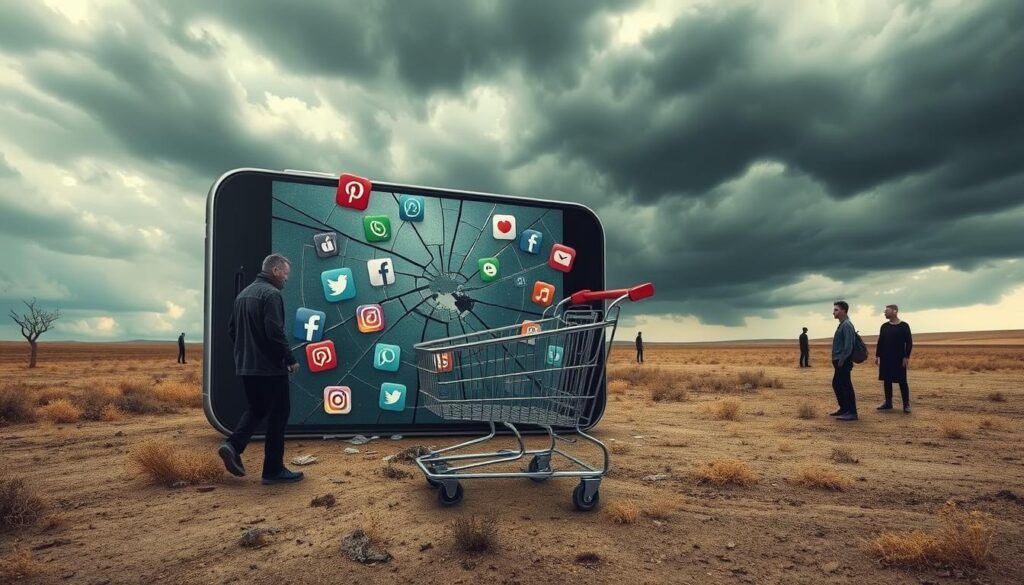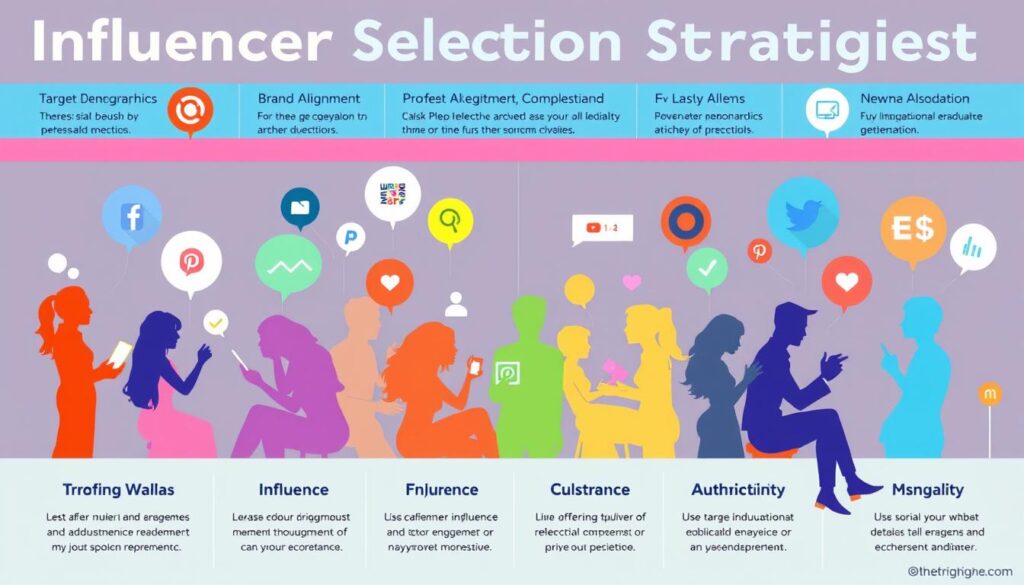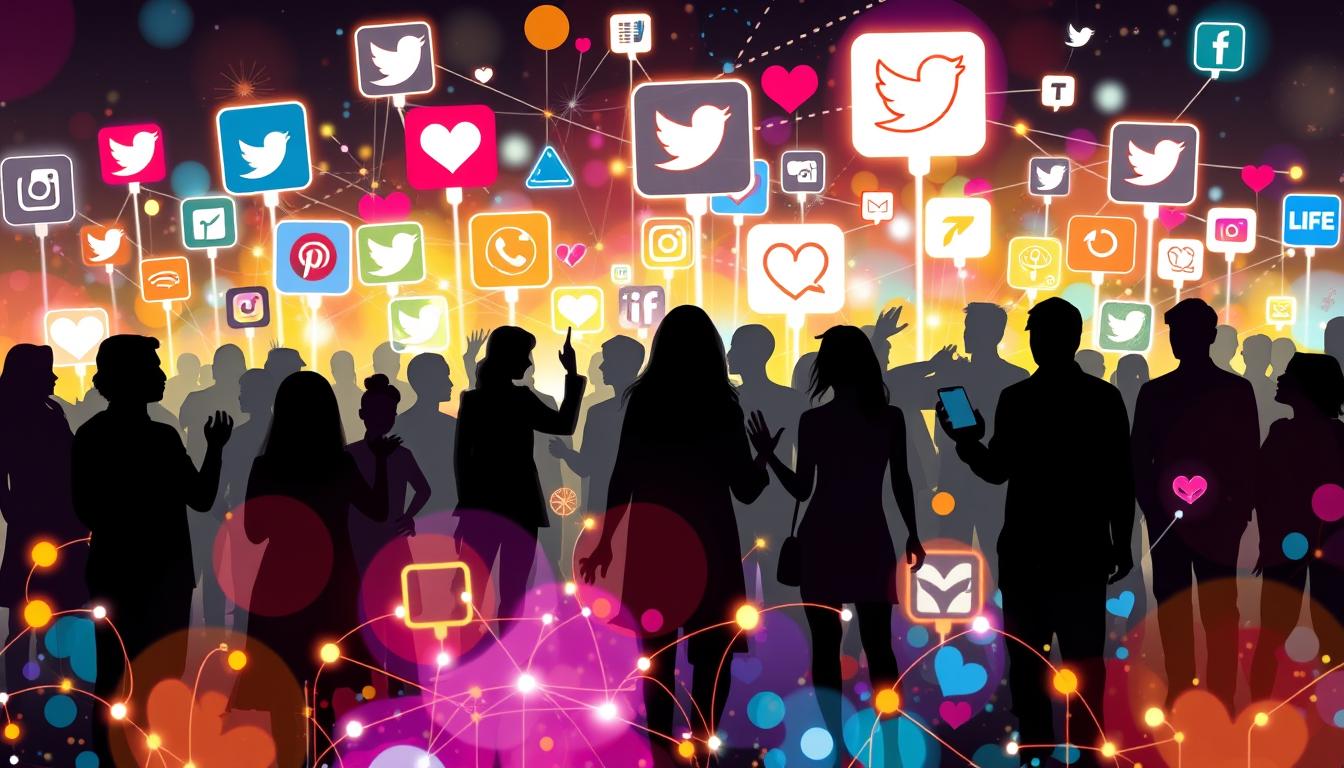Have you ever thought about how a single post on Instagram or TikTok can change a brand’s image? Welcome to the world of influencer marketing. Here, social media stars have a big impact on what people think and buy. This guide will show you how these digital trendsetters shape the online world for businesses.
The influencer marketing industry is booming, expected to hit $24 billion by 20241. This shows how important influencers are for making brands known and improving their online image. Today, over 80% of marketers see influencers as key to their social media plans1.
There are different types of influencers, from those with a small following to those with millions of fans. Each type has its own benefits for working with brands2. In 2024, 44% of brands chose to work with nano-influencers, up from 39% the year before. This shows a move towards more real and focused partnerships1.
Influencers really change how people act. A big 49% of consumers buy things monthly because of influencers. And 86% buy products they saw on influencers at least once a year1. These numbers show how big an impact influencers have on how people see brands and what they buy online.
Key Takeaways
- Influencer marketing is projected to be a $24 billion industry in 2024
- Over 80% of marketers consider influencers essential to social media strategy
- Nano-influencers are gaining popularity among brands for partnerships
- 49% of consumers make monthly purchases based on influencer posts
- Influencers significantly impact brand awareness and consumer trust
- Different influencer categories offer varied benefits for brand collaborations
- 86% of consumers make influencer-inspired purchases at least yearly
Understanding Influencer Marketing in the Digital Age
Influencer marketing has changed how brands reach people on social media. With 4.9 billion users worldwide, brands use content creators to influence what people buy3. This method has become a $21.2 billion industry, with 93% of marketers working with influencers3.
Influencers greatly affect how people see brands. 61% of customers trust what influencers say more than what brands say, showing their realness3. This trust leads to action, with 33% of Gen Z buying things because of influencers in the past few months3.
Micro-influencers, those with less than 100,000 followers, are becoming more popular for brand deals. They often get more engagement, making them great for specific marketing goals4. In fact, these smaller influencers can get up to 60% more engagement than bigger ones3.
“Influencer marketing remains a crucial tool for brands to connect with their target audience and differentiate themselves in a competitive market.”
Influencer marketing shows its worth through its return on investment. A study by Nielsen Catalina Solutions found that B2B influencers brought in an ROI 11 times higher than traditional marketing4. This success has led to more money being put into it, with B2B companies planning to increase their social spending a lot for products and services4.
| Metric | Value |
|---|---|
| Industry Size | $21.2 billion |
| Marketers Using Influencer Marketing | 93% |
| Trust in Influencer Recommendations | 61% |
| Gen Z Purchasing Based on Influencers | 33% |
The way we use influencer marketing is changing with the digital world. We’re seeing more focus on micro-influencers, being real, and the importance of videos. With 45% of marketers seeing it as very effective for making money, it’s clear it will keep playing a big role in digital marketing3.
The Role of Influencers in Online Reputation
Influencers have a big impact on how brands are seen online. They make content that feels real to their followers, which helps build trust and credibility for the brand. In 2020, 87% of people looked at online reviews for local businesses, showing how important being seen online is5. This number is expected to go up, with 98% of people checking online reviews by 20235.
Working with influencers who share the brand’s values helps companies grow their online presence and reach new people. These partnerships help brands get their message out and shape what consumers like6. This can lead to more people engaging with the brand, visiting their website, and making purchases.

Trust is key in today’s online world. A study by Edelman showed that 81% of people need to trust a brand before buying from it5. Influencers are key in building this trust. In 2020, 49% of people made purchases based on what influencers recommended5.
| Aspect | Impact |
|---|---|
| Brand Awareness | Increased reach and engagement on social media |
| Customer Trust | Enhanced through authentic content and recommendations |
| Social Proof | Provided by influencer endorsements and user-generated content |
| Digital Presence | Expanded through influencer partnerships and collaborations |
| Engagement Rates | Boosted through influencer-created content and interactions |
It’s important to pick influencers wisely. What they do and say affects the brand’s image. Being open and clear in influencer marketing is key to gaining trust and following the rules6. By using influencers well, brands can greatly improve their online reputation and connect deeply with their audience.
Benefits of Leveraging Influencers for Brand Image
Influencer marketing has changed the game for brands wanting to boost their online image. With 75% of B2B companies using this method, it’s clear influencers are key for improving brand image7. Let’s look at the main benefits of working with influencers.
Influencers offer targeted marketing chances. Their followers often like the same things, helping brands reach the right audience. This targeted way gets more engagement than old-school ads.

Authentic content is key in influencer partnerships. 38% of consumers say brands should focus on original content7. Influencers are great at making content that feels real and connects with their followers. This builds trust and credibility for the brand.
Working with micro-influencers is also cost-effective. They may have fewer followers but engage more with their audience8. This can cut down on costs and help keep customers coming back7.
Long-term partnerships with influencers help build brand loyalty. In fact, 33% of social marketers focus on building lasting relationships with influencers7. These partnerships keep the brand message consistent and build stronger connections with the audience.
| Benefit | Impact |
|---|---|
| Targeted Marketing | Reach specific audience interested in products/services |
| Authentic Content | 38% of consumers value original content7 |
| Cost-Effectiveness | Reduced customer acquisition costs |
| Brand Loyalty | 33% of marketers focus on long-term partnerships7 |
By using influencers, brands can get creative content, save time, and learn more about consumers. With 94% of business leaders using social media data for brand building, influencer partnerships are a strong tool for improving brand image7.
Potential Risks and Challenges in Influencer Partnerships
Influencer marketing can be a strong tool for brands, but it comes with risks. While 51% of marketers think it helps them get better customers, picking the wrong influencer can hurt a brand’s reputation9. Let’s look at some big challenges brands face in this area.

One big worry is inconsistent messaging. If influencers don’t share your brand’s message well, it confuses customers. This is a big issue with mega or celebrity influencers, who have lots of followers but not always high engagement10. They might spread your message too thin.
Seeing the same endorsements too often can also be a problem. This is especially true for macro-influencers, who have a lot of followers but might not be as real as smaller influencers10.
Scandals involving influencers can really hurt a brand’s image. If an influencer gets into trouble, it can affect your sales and reputation. You need to act fast to manage this crisis.
To avoid these problems, brands should:
- Do deep research on influencers before working with them
- Keep an eye on what influencers post online
- Have a strong plan for handling crises
- Think about using micro-influencers (10,000 to 100,000 followers) for more engagement and realness10
By tackling these issues, brands can use influencer marketing well and keep their reputation safe. Remember, 92% of people trust advice from people they know more than other ads, making influencer partnerships both valuable and tricky9.
Strategies for Successful Influencer Collaborations

Influencer marketing has grown a lot, reaching $21.1 billion in 202311. To make the most of it, we need smart strategies for working with influencers. Let’s look at key ways to make these partnerships work well.
Start by setting clear goals and KPIs for your campaign. Goals might include getting more people to know your brand, increasing website visits, or getting more sales12. Then, pick influencers who share your brand’s values and have the right audience for your products.
Think about the size of the influencers you work with. Micro-influencers (10,000 to 50,000 followers) often get more engagement than big-name influencers (over one million followers)11. Look at how engaged their followers are, not just how many they have.
Creating great content is key. Let influencers be creative but make sure they get your brand’s message. This way, they make content that feels real to their followers.
| Collaboration Type | Description | Benefits |
|---|---|---|
| Sponsored Posts | Influencers create content featuring your product | Direct product exposure |
| Brand Advocacy | Long-term partnerships with influencers | Consistent brand representation |
| Affiliate Marketing | Influencers earn commission on sales | Performance-based marketing |
It’s important to track how well your campaigns are doing. Look at things like views, sales, and clicks to see your return on investment. The ROI for influencer marketing is: (Value of Benefits – Costs) / Costs x 10011. This helps you see if your campaigns are working and plan better for the future.
Finally, try to build long-term relationships with influencers. 56% of brands work with the same influencers on different projects12. This leads to more genuine and steady brand representation, building trust with your audience over time.
Conclusion
In today’s fast-changing digital world, influencer marketing has changed the game for brands. It helps them grow their online presence and reputation. Social media influencers greatly affect how customers act and shape brand images13.
Working with influencers gives brands a chance to gain trust and be seen as leaders in their field. Through influencers, companies can reach more people and make a positive mark. This targeted approach helps brands connect with customers on a deeper level, making their products or services more relatable14.
To make the most of influencer marketing, brands need to focus on being real and choose the right partners. This way, they can grow their brand, build trust with customers, and strengthen their marketing efforts. As we move forward in this digital age, influencer partnerships will keep being key in building strong online reputations and connecting with audiences.
FAQ
What is influencer marketing?
Why is influencer marketing important for brand reputation?
What are the benefits of leveraging influencers for brand image?
What are the potential risks of influencer partnerships?
How can brands ensure successful influencer collaborations?
Why is influencer marketing important in the digital age?
Source Links
- What is influencer marketing: An influencer strategy guide for 2024 – https://sproutsocial.com/insights/influencer-marketing/
- Social Media Influencers: A Complete Guide for 2024 – https://influencity.com/blog/en/social-media-influencers-everything-you-need-know-about-them
- The Power of Influencer Marketing in the Digital Age – https://exafutures.com/en/the-power-of-influencer-marketing-in-the-digital-age
- The Role of Digital Influencers and Their Impact on Digital Marketing – https://www.newbreedrevenue.com/blog/the-role-of-digital-influencers-and-their-impact-on-digital-marketing
- Reputation Management For Influencers To Build And Sustain A Positive Digital Presence – https://konnectinsights.com/blogs/reputation-management-for-influencers/
- Understanding the Role of Internet Influencers in Today’s Digital Landscape – https://www.onlinereputation.com/what-is-an-internet-influencer/
- The benefits of influencer marketing (+ what the C-Suite cares about) – https://sproutsocial.com/insights/benefits-of-influencer-marketing/
- How to Leverage Influencer Marketing for Your Brand – The Cirqle – https://thecirqle.com/blog-post/how-to-leverage-influencer-marketing-for-your-brand
- The Benefits and Challenges of Influencer Marketing – https://www.linkedin.com/pulse/benefits-challenges-influencer-marketing-knowledgeworld24-abr4f
- The Pros And Cons Of Influencer Marketing | Oviond – https://www.oviond.com/the-pros-and-cons-of-influencer-marketing/
- The Power of Influencer Marketing: Collaboration, Brand Awareness and Authenticity – https://online.mason.wm.edu/blog/the-power-of-influencer-marketing
- How to Build a Successful Influencer Strategy – https://www.meltwater.com/en/blog/how-to-build-a-successful-influencer-strategy-with-the-right-social-channels
- Examining the Role of Social Media, Online Reviews, and Influencers in Shaping Consumer Perceptions – https://www.abacademies.org/articles/examining-the-role-of-social-media-online-reviews-and-influencers-in-shaping-consumer-perceptions-16644.html
- Influencer Partnerships in Online Reputation Management – https://www.internetreputation.com/the-role-of-influencer-partnerships-in-online-reputation-management/

